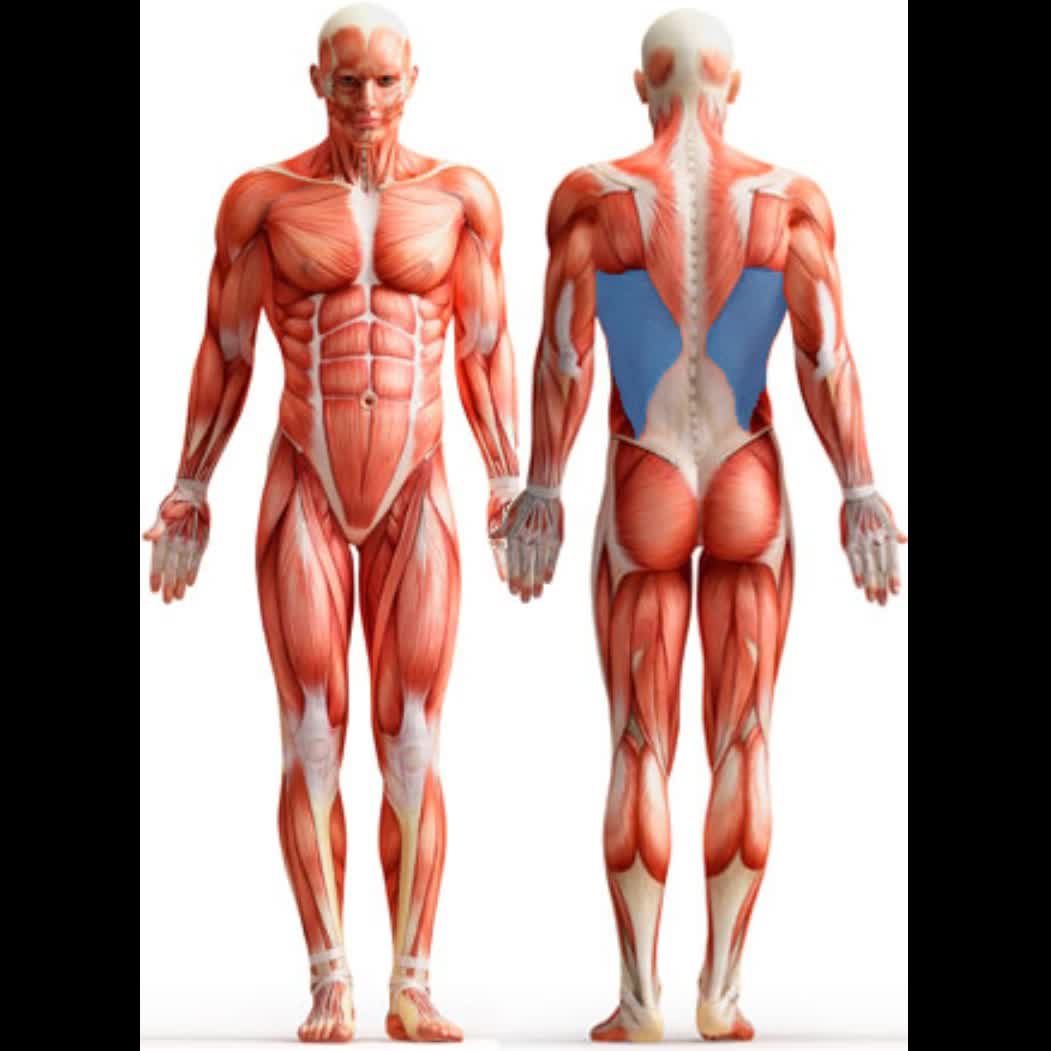Let’s talk about Lats baby! What is their functionality? When do we use them?

The latissimus dorsi, commonly referred to as lats, are huge diagonal muscles covering a large area of the back. They attach to the top of the pelvis, along the spine, the ribs, and to the humerus (upper arm bone). They are responsible for producing shoulder extension, adduction, and internal rotation. It is important to note that in this instance, the term “shoulder” refers to the movement of the humerus, not the scapula, or shoulder blade. Another important isometric function of the lats is to stabilize the lumbo-pelvic hip complex.
Due to their size and the number of joints they span, the lats are a global mobilizer. This means they aren’t designed for fine-tuned motion such as scapular stabilization, depression, and retraction, or the common cue “squeeze your shoulder blades”. But they are perfect for large, more powerful movements.
The lats should be recruited in pulling motions. This means that if you are in the pull phase of a motion, where your arms are traveling towards your body, your lats should be on. It also means that if you are in the pushing phase of a motion, where your arms are traveling overhead or away from you, your lats should NOT be working.
To translate this into functional motion, the lats are helpful for activities that require pulling your arms down; lat pulldown, lat pullover, or high row. They are also used to pull your body up, for example, doing a body-weight or suspension pull-up. They give you power in movements like rock climbing, wood chopping and swimming. They also have a strong connection at the pelvis and in some instances can be used for enhancing glute activation.
In short, your lats are essential to many functional movements. However, if you use them to pull your shoulders down and back while your arms are moving away from you (for instance, during an overhead press) then you’re going to inhibit the necessary upward rotation of the scapula and create impingement and dysfunction. The same goes for using them as a shoulder stabilizer instead of the rhomboids, serratus anterior, and rotator cuff.
Ultimately, it pays to consider which muscles should be creating each motion. This doesn’t mean that we need to be anatomy experts. However, we do need to be mindful about how we train our bodies.
If you find that you need more guidance, don’t hesitate to contact us. We welcome your questions and comments.
Recent Comments